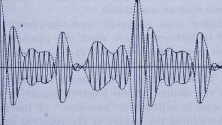Adam Drew is a technical support engineer for Red Hat's Global Support Services specializing in clustering, storage, and file systems. When he’s not working on enterprise storage, Adam can be found writing and recording music, writing for his blog, maintaining his FOSS Audio KBase, programming, and experimenting with graphic design and digital painting, all on free and open source software (FOSS).
Not only is there a ton of great open source software out there for audio production, choosing it isn't "settling." It's as good as, and in some cases better than, the proprietary (and often expensive) options. But what does making that choice for openness mean?
Adam uses the Free Software Foundation's definition of the freedoms you have:
- Freedom to use
- Freedom to learn
- Freedom to share
- Freedom to change
And why is that important for music? Music is naturally a collaborative and community-driven art. "The shackles that are put on us by non-free software severely limit our ability to collaborate and to share," said Drew. "We're better musicians when we're sharing and collaborating, and free and open source software gives us the opportunity to do that." Proprietary software limits you with real barriers towards managing a studio or business and working with others. FOSS relieves that, offering a real, tangible benefit for musicians.
JACK
JACK is a recursive acronym for the Jack Audio Connection Kit, low-latency audio transport in Linux. It's the subsystem that allows apps to route audio into the computer and out through it. Having one standardized gatekeeper makes sense--each app doesn't have to have its own audio engine.
Latency is the amount of time it takes your audio to flow through your computer--how long it takes a guitar strum to get from your fingers through the hardware, software, and out through the speakers. That round trip time is the latency. If it's too high, you'll notice a delay. If it's low enough, you won't even notice. JACK offers no latency, which means it will route audio through your computer as fast as your hardware will allow it. It's also ultra-low-latency, means you can get it down to imperceptible latencies.
Apple Logic Studio or DigiDesign Pro Tools offer everything in one package. When producing under Linux, you can use JACK instead to let you put together some very specialized tools as you prefer or need, for example, to choose a different synthesizer from drum machine.
It can be intimidating to new users--Adam calls it the "techiest" of the pieces he uses. But it's the heart of your open source audio setup.
Hydrogen
Hydrogen is a drum machine, which is an app that lets you create percussion accompaniment to other instruments.

Click the image to see more screen shots
In its right panel, it offers multiple drum kits, or you can create your own. Hydrogen also has a community of users who create kits and offer them online. Each kit expands to list the pieces that are offered within it. For examples, the Roland TR-606 contains the kick, snare, low tom, hi tom, closed hat, open hat, cymbal, etc. Moving on a timeline, you can specify which sounds you want to play when. In pattern mode, you can loop a pattern one create--Adam made a simple one in just a few clicks. For most music, one drum beat isn't enough though. So in that case, you layer patterns on top of each other, progress, and play different patterns at different times--result: a song.
Rakarrack
Rakarrack, named for the sound created when muting the strings with the fret hand while strumming a guitar, is a guitar multi-effects processor that emulates a guitar effects pedalboard. It lets you build complex patches of sound and effects chains for your guitar out of simple, smaller effects. You can select a palette of effects--distortion, EQ, overdrive--and create your own unique guitar sounds. Each individual sound has a number of parameters, and you have up to 10 slots per patch for effects, leading to millions of possibilities. Create your own patches from scratch, or use some of the great built-in patches. Like Hydrogen, there is also a Rakarrack community for sharing and downloading patches. It's also conveniently designed to be used with JACK.
ZynAddSubFX
ZynAddSubFX is an incredibly versatile software synthesizer, particularly if you love electronic sounds. It has an additive engine, a subtractive engine, and a pad synthesizer, ADsynth, SUBsynth, and PADsynth, respectively. It comes with hundreds of patches in various collections. It excels at metallic and percussive sounds and can do a good electronic piano, but isn't as great at really natural sounds.
ZynAddSubFX features realtime, polyphonic, and multitimbral synth, as well as microtonal capabilities with any scale up to 128 notes per octave. Many of its settings include randomness to help you make instruments that sound a bit different each time.
Ardour
Ardour is a digital audio workstation. It allows you to record individual tracks of music and to layer and mix them into a composition. For example, if you're listening to a pretty basic rock song, it wasn't all recorded into one channel--the drummer is in the drum channel, the guitarist in the guitar channel, and the individual channels are mixed into a whole. Ardour is how you make that happen.

Click the image to see more screen shots.
"The fact that there is free software of this caliber is really mind-blowing," said Adam, encouraging that users donate to its team. This is the tool you'll spend a lot of your time in, so it's important for it to be good.
Ardour is free software released under the GPL, but it's not entirely free-as-in-beer. For the full version (which adds the ability to load or save AU plugin settings), you're asked to donate any amount you feel is appropriate. (The default recommendation on the donation page is $45.)
Getting help
These are just five of the hundreds of audio packages you have to choose from for nearly any music project you could imagine.
Adam recommends two really helpful and active online communities with IRC channels on the Freenode network: #opensourcemusicians (which has a podshow about open source audio) and #ubuntustudio, which has a very active mailing list and is growing. His nick is holstein--feel free to say hello.
If you're a Fedora user, check out the Fedora Musician's Guide. You can also find tips in one of Adam's personal projects, the FOSS Audio Kbase.
Listen to the recording to hear Adam give more in-depth information and demos of each of these components.






15 Comments